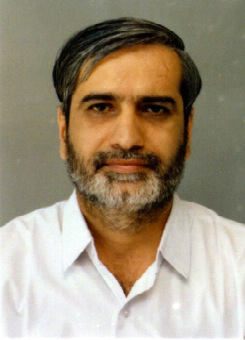 Under the Government of India’s “Energy Conservation Act” of 2001, the Textile sector has been designated as one among fifteen most energy intensive sectors. Accordingly, under the National Mission on Enhanced Energy Efficiency program – launched by Bureau of Energy Efficiency (BEE), GoI – the scheme of Perform, Achieve and Trade (PAT) was initiated in March 2012 for industry to vigorously implement energy efficiency measures in all the designated sectors. This scheme is one of the first mandatory schemes for energy efficiency improvement in the industrial sector.
Under the Government of India’s “Energy Conservation Act” of 2001, the Textile sector has been designated as one among fifteen most energy intensive sectors. Accordingly, under the National Mission on Enhanced Energy Efficiency program – launched by Bureau of Energy Efficiency (BEE), GoI – the scheme of Perform, Achieve and Trade (PAT) was initiated in March 2012 for industry to vigorously implement energy efficiency measures in all the designated sectors. This scheme is one of the first mandatory schemes for energy efficiency improvement in the industrial sector.
It is well-known that the textile industry consumes significant amount of thermal as well as electrical energy. The basic consumption of thermal energy is in chemical processing of fibre, yarn and fabric whereas the electrical energy is consumed in spinning and weaving sections. It is estimated that in a textile process house, the consumption of thermal energy is nearly 70-80% of the unit’s total energy consumption. The major energy consuming machines in the textile sector include ring frames, humidification plants, stenters, mercerizers, cheese winding- TFO, sanforizers, etc. Unfortunately, the industry has traditionally lacked in modernization and mostly depends on old machinery and technology. Tremendous technological developments have taken place in terms of automation and energy efficient machinery and processes. The Indian industry, by and large, has not paid any attention even to implement simple energy saving techniques which are well-known as well as inexpensive. These are globally publicized as Best Practices for production as well as energy conservation.
In order to promote energy efficient industry, Government of India has notified the threshold limit to become a ‘designated consumer’ for 8 industrial sectors. For becoming a designated consumer in Textile sector, the threshold limit is 3000 MTOE (Metric Tonne of Oil Equivalent). Any textile unit consuming energy more than 3000 MTOE is considered as designated consumer and included in the PAT scheme. BEE has selected 90 units as designated consumers in textile sector under the first PAT cycle and set the target reduction of 66000 Tonne of oil equivalent. They have been asked to achieve targeted reduction in their Specific Energy Consumption by the year 2014-15. The PAT scheme rewards those who achieve the target by giving them Energy Saving Certificates (ESCerts) which they can trade in the market. Those who fail to achieve the targeted reduction have to pay penalty. Around 0.66 million ton of oil equivalent are expected to be saved from all the textile industries covered under this scheme. The benefit in terms of reduction of CO2 emission is estimated to be approx. 0.35 million ton per year. The common measures suggested for achieving greater energy efficiency are high capacity utilization, fine tuning of major equipment, technology up gradation and various re-engineering initiatives.
Top achievers in different sectors are given National Energy Conservation Awards by the Power Ministry. The winners of the 2013 awards in the textile sector were : APM Industries Ltd. (Unit: Orient Syntex) – 1st Prize; Raymond Limited (Textile Division) – 2nd Prize under the category of more than 100 lakh kWh/year consumption. Under the category of less than 100 lakh kWh/year consumption, Zenitex Pvt. Ltd., Surat was given the Certificate of Merit.
The days ahead will be crucial in terms of availability and price of energy. The overall competitiveness will depend on how efficiently the industry uses its resources and adopts modern energy saving technology. The PAT initiative is, indeed, a laudable scheme and the industry must take it seriously and get involved in it wholeheartedly. The time to join the “Energy Efficiency Movement” is now.





